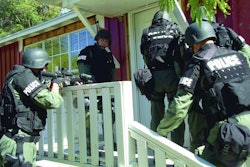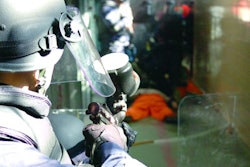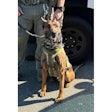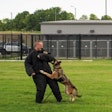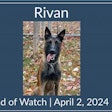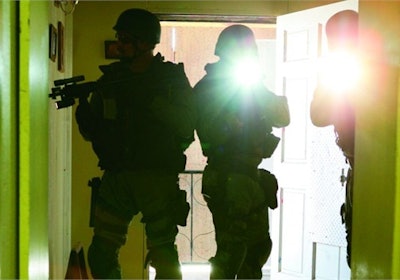
It's a known fact that most officer-involved shootings occur at night. It's also a known fact that very few police officers have been trained in low-light close-quarter combat.
When John Matthews developed the first SureFire flashlight, he realized that for officers to get the most benefit out of the light, they would need special training. So Matthews, now president and CEO of SureFire, created the SureFire Institute, one of the nation's premier low-light combat training academies.
The Institute was established in 1989 as a sort of "think tank" used to develop and test new tactics that could be employed by the military and police. It's gone through some major changes in the intervening 18 years.
"Originally the concept began with paintball and running around shooting people," says Bill Murphy, SureFire's director of training. "Today, we teach law enforcement and military tactics to guys who go into the field and use the flashlights as tools to enhance their ability to search, to control people, and to gain whatever tactical advantage possible."
Matthews and SureFire's commitment to increasing officer safety and survival went far beyond what other folks in the illumination business did at the time.
"At the time, a lot of flashlight companies had night shoots, but they were very rudimentary and overly simple," Murphy says. "What happened was that SureFire came in and raised the technical level and increased the use of the light with the firearm."
The SureFire Institute helped officers learn how to integrate firearms tactics with illumination tools, Murphy explains. "Everybody had the idea that a flashlight was needed, but they didn't know how to use it. And a lot of times when they did use it, they compromised their safety because they didn't understand the benefits of different techniques."
Today, the SureFire Institute offers numerous low-light training programs, including rifle and handgun tactics and even night driving courses. The company can even tailor a program to meet the specific needs of an agency. Officers can attend courses at SureFire's Southern California training facilities or their agencies can arrange to bring in SureFire's instructors for on-location training.
Essential Training
Some agencies and some officers may view low-light combat training as an unneeded luxury, especially if they don't work a lot of night shifts. But SureFire believes this training is essential for all officers because most attacks on police occur at night or in the dark. Even in daylight hours, officers often end up searching dark buildings, and they need to know how to use a flashlight to gain a tactical advantage, says Murphy.
"Every officer has a flashlight and, like any piece of equipment, it can be used correctly or it can be used incorrectly," Murphy says. "If we use it correctly we can prevent injuring people that don't need to be injured. If we use it incorrectly we have a situation where officer safety is compromised and where a suspect may be shot when the suspect didn't have to be shot."
The SureFire Institute doesn't just focus on the flashlight as a tactical illumination tool. It also instructs officers in the fine art of using the light to disorient attackers.
Murphy says a SureFire light can be used as a force option, and he's not talking about wielding the lightweight flashlight as a club. "By shining it in their eyes we achieve an amount of control over them. They don't resist, they don't fight, and they are dealt with in a controlled manner."
The light can also be used as a distraction device and a decoy. "You can get the [bad guys] to react to the light and decide to fight, but now they are fighting against the light—not necessarily against the officer," Murphy explains. "So, if the officer is holding the light away from his or her body, the bad guy is now shooting at the light. This also allows the officers to shoot effectively because they can see their target."
Murphy says that he understands the reluctance of some officers to use their lights in tactical situations. But he says officers who know what they are doing with the light don't necessarily make themselves a target when they press the light's switch.
For example, a good flashlight can be used to negate the backlit effect of an officer stepping from a lit room into a darkened room. "If we go into a room and it is dark, the advantage is held by the guy in the room," Murphy explains. "Because he knows where the door is and the officer entering is generally going from a lighter area to a darker area. But when we can change the environment by changing the lighting conditions, that makes it better for us because the hidden person's eyes become dark-adapted and are more readily affected by the light."
Decades of Total Experience
SureFire puts as much thought into the selection of the Institute's instructors as it does into developing its product line. The instructors are all top notch.
In addition to serving as the Institute's director of training, Murphy is a career law enforcement officer with 27 years on the Huntington Beach (Calif.) Police Department. He is also a SWAT officer, and has spent the last 17 years as an instructor at Gunsite.
Murphy is known as an innovator, and he spends a lot of time traveling the world and exposing himself to other techniques. In fact, he told me that his last evaluation required him to travel. "It said that I must continue to go around the world, teaching and training with other people and bring the best techniques back to the Huntington Beach PD."
After he was selected by SureFire, Murphy recruited one of his fellow SWAT officers to join him at the Institute. Doug Martin, a man whose Hollywood smile and good looks have garnered him a number of TV and movie credits, also possesses a lengthy law enforcement résumé.
Murphy credits Martin with helping him make the program what it is today. "We developed doctrine together and were pretty good at recording a lot of information and putting it down on paper," he says. "We have about 10 other guys around the country that work as instructors for us. We take instructors with a certain set of skills but then I train him up so that we all teach exactly the same thing. We want to make sure that people are getting the same message across the board. There's many ways to attack problems, but as long as we do it in a uniform approach it makes it easier for people to repeat it and use it effectively."
Student Body
Law enforcement, military, and private security and contractors, are eligible to attend the Surefire Institute. Murphy also conducts civilian training through his company, Firearms Training Associates, www.ftatv.com.
"Anybody with a CCW should be able to get good training," Murphy says. "We don't want them on the streets with a gun and a flashlight and not be able to work them. We also do classes at Gunsite for civilians and teach them the fundamentals of flashlight use."
If you're interested in scheduling a class for your agency, contact SureFire's Bill Murphy or Stuart Jager and they'll send an enrollment packet. Agencies can either attend the Surefire Institute facilities or host the class themselves.
"We just took the show on the road to the Army, the Secret Service, the NYPD, and the Marines, all in a four-week period. We just went from training site to training site for four weeks," says Murphy.
Reduced Liability
If you're wondering just how badly you or your department needs training with illumination tools, consider this. According to Murphy, up to 25 percent of officer-involved shootings are of unarmed suspects.
"Imagine if you could eliminate 25 percent of lawsuits just through training; that's an incredible number. A properly trained officer can use the flashlight to react sooner and stop a potential threat to themselves more effectively. We don't shoot the person that shouldn't be shot but when it is time to shoot we can do it quicker.
"I have attorneys right now struggling to get my training material," Murphy adds. "Any time you have a wrongful death situation, it is generally going to be in a diminished light situation. The lighting conditions that we usually work in actually give us the vision of someone that is legally blind. So, how can we make good decisions when it would be impossible for us to read an eye chart immediately in front of us?"
If the officer survival benefits of the Surefire Institute aren't persuasive enough for your bean counters to authorize funding for the class, then maybe the risk management aspect will be what it takes for your officers to get the training that they need.
Mike Detty is an NRA-certified rifle, pistol, and shotgun instructor. A certified rangemaster and competition shooter, Detty served as an officer in the U.S. Marine Corps and holds a degree in criminal justice from the University of Arizona.








